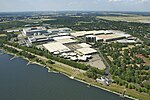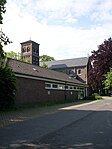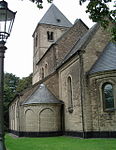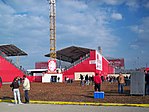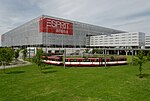Kaiserpfalz Kaiserswerth

The ruin of the Kaiserpfalz Kaiserswerth is located in the Kaiserswerth district of Düsseldorf, Germany. This Kaiserpfalz dates back to a monastery founded by the monk Suitbert(us) around 700 AD. At that time, the Frankish House Emperor Pepin of Herstal and his wife Plectrude gave the Anglo-Saxon monk a Rhine island which was created by circling the old arm of the Rhine, on which there was already a "Frankish Fronhof" protected by an earth wall, moat and palisades. In the following period, it developed into a fortified customs stronghold. On December 23, 1982, the complex was entered in the city's list of monuments in the category of castles, manor houses, fortifications and palaces. The name Kaiserswerth is derived from the Middle High German word werth for island. It therefore means imperial island or island of the emperor.
Excerpt from the Wikipedia article Kaiserpfalz Kaiserswerth (License: CC BY-SA 3.0, Authors, Images).Kaiserpfalz Kaiserswerth
Burgallee, Dusseldorf Kaiserswerth (Stadtbezirk 5)
Geographical coordinates (GPS) Address External links Nearby Places Show on map
Geographical coordinates (GPS)
| Latitude | Longitude |
|---|---|
| N 51.2995 ° | E 6.7318 ° |
Address
Kaiserpfalz
Burgallee
40489 Dusseldorf, Kaiserswerth (Stadtbezirk 5)
North Rhine-Westphalia, Germany
Open on Google Maps

